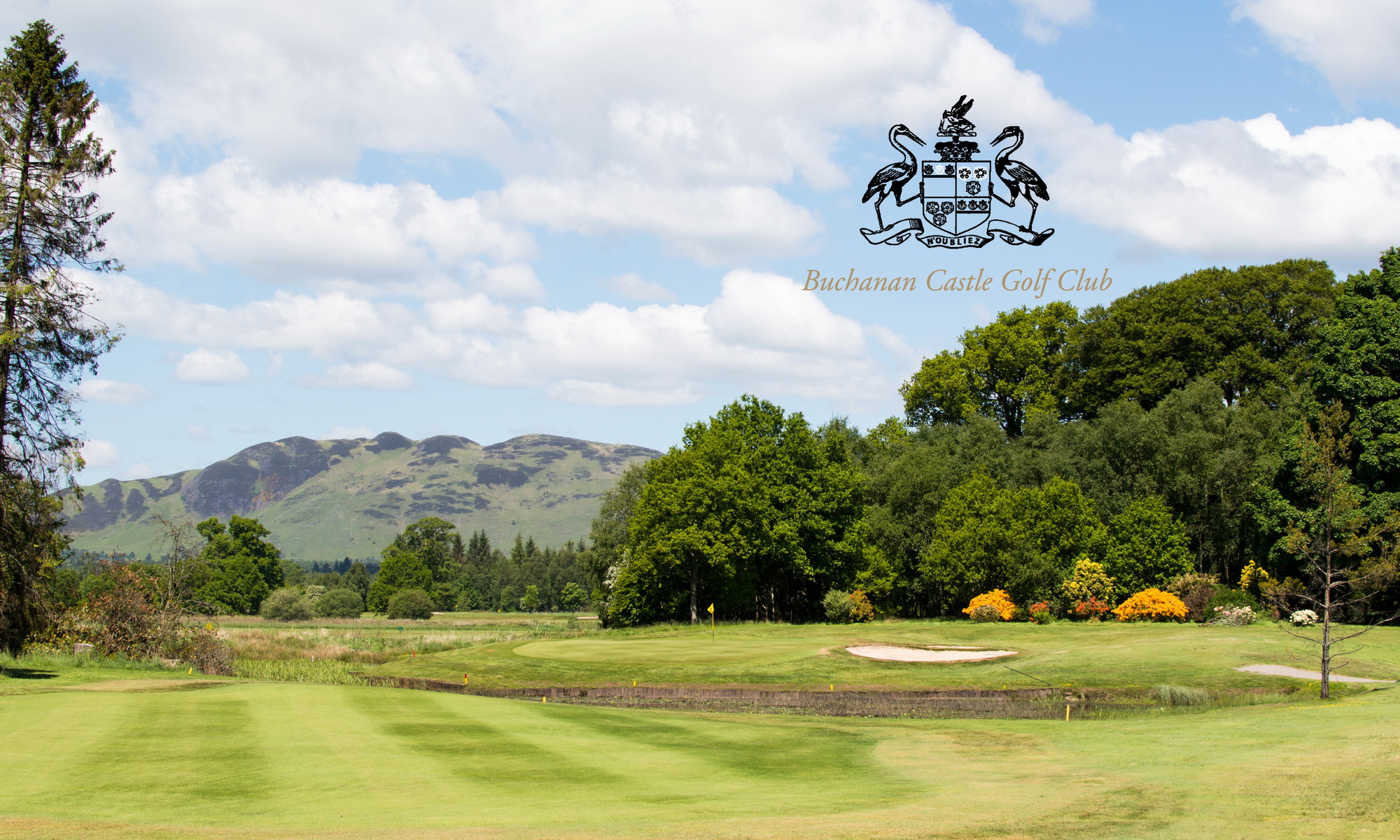Course History
During the period between the wars, the game of golf experienced a great boom. Buchanan Castle Golf Course was first discussed in 1935.
James Braid (Five times Open Champion and respected course architect) was engaged to survey and design a golf course on Buchanan Castle Estate.
The ground extending below the remains of the old Buchanan House, which had been used as an exercising area for horses, was to become a golf course of championship length. This magnificent natural area of parkland with good turf and sandy sub-soil, the River Endrick, two burns, a lochan, and mature trees, provided Braid with all the pre-requisites for an excellent layout. With fine views of the Conich to the West and Campsie Hills to the East, Braid who had a good eye for the countryside, surveyed the proposed area. His vast experience in course design is borne out by the skilful utilisation of all the natural features. Braid’s hallmark was the dog-leg and on the Original Course, there were no fewer than twelve dog-legs of varying degrees.
Thus there was a course constructed with an awe-inspiring eighteen holes with a total length of 6853 yds. and featuring eight par 5s. The course favoured the long hitter with a carry of 200 yds. across the River Endrick at the sixth hole.
During the second world war all golf clubs were directed to contribute to the Nation’s food supply. The course was restricted to twelve holes for the duration of the war. The land to the East of Jamie’s Burn on what is now the 14th and 15th fairways was ploughed (which accounts for the different turf compared to the old turf on the rest of the course) and the land beyond the present boundary fence at the back of the present 14th green (no longer part of the course), was used for grazing.
On 13th September 1947 a Charity Exhibition Match involving Walter Hagen was arranged. Legend has it that Walter Hagen holed a twenty foot putt on the 18th green. His playing partners congratulated him on his putt and said, “Bet you can’t do that again”. Hagen asked for his ball back and proceeded to sink the putt again from the same distance.
During the war the castle was offered to the British Red Cross and it became the 4th Scottish General Hospital.
In 1941Rudolph Hess, the Deputy Fuhrer of Germany, took it upon himself to fly solo to Scotland to seek peace negotiations. After running out of fuel and having to parachute to land, he was arrested near Glasgow. He was taken to Buchanan Castle for further medical treatment. Hitler was apoplectic on discovery of Hess’ act. Stripping him of all powers he ordered him shot on sight sending shockwaves through the Nazi High Command. Maybe, just maybe, this remarkable act involving Buchanan Castle was as a key point in ultimate Nazi defeat.
Still to do.
RYDER CUP 2014
Buchanan Castle Golf Club had the distinct honour and privilege of
being chosen to host the biennial Ryder Cup Board Match – a
preliminary event involving officials from the PGA of America and
Ryder Cup Europe — prior to the 40th playing of the biennial
competition between teams from Europe and the United States;
which took place at Gleneagles from 26th 28th September, 2014.
RYDER CUP 1957
The 12th playing of the Ryder Cup took place at Lindrick – one of Britain’s
finest inland courses — and was witness to a historic victory for the British
team after a gap of 24 years. Eric Brown, our Professional, was a
member of the winning team. In recognition of this, the Ryder Cup trophy
was on display in the Clubhouse for 2 months in 1957. He had previously
been a member of the 1953 & 1955 teams and subsequently in 1959. He
was also non-playing Captain in 1969 & 1971. His win-loss-half record
was 4-4-0. He competed in the Open Championship 21 times, finishing
3’d and tied 3rd in 1957 & 1958, respectively.
RYDER CUP 2018

Our club professional in 2018, Keith Baxter, was also chairman of the Scottish PGA. In that capacity he was involved in the Ryder Cup competition at Le Golf National in Paris. In April the next year Keith was able to bring the cup to Buchanan Castle Golf Club and members and their families were able to hold the cup and take pictures.

